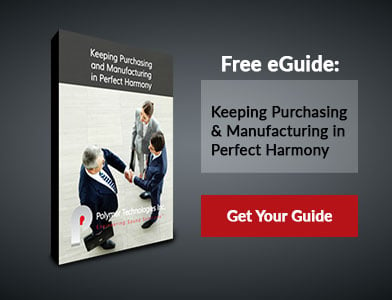Developing a new product on the cutting edge requires innovative thinking. Original equipment manufacturers are continually trying to break the mold with their new product designs, but sometimes the end product doesn't work as intended.
Usually, manufacturers use flat foam barriers, foam absorbers, and damping pads to control temperature, noise, and heat emitted from machinery during operation. While 2D foam solutions can prevent a lot of energy management issues, 3D polyurethane molded foam solutions can provide additional benefits depending on the application.
But, how do you go from a 2D to 3D foam solution?
Custom Molded Foam Development
Molded polyurethane foams are suitable for applications where sound attenuation, isolation, and thermal control are paramount. Working with an expert in molded polyurethane is usually the best way to meet your desired energy management requirements!

1. Ideation
The key to creating custom molded foam parts is collaboration. When you work with an expert, like our Polymer Molded Foam Division, the first step in the process is discussing your needs. Having a molded foam expert assisting your development can help you not only create the right shape but provide the best formulation of foam for your needs.Some of the most common questions a molded foam expert will ask you:
- What are the dimensions of your product?
- What environment does your product operate in?
- Does your project require sound attenuation, vibration isolation, thermal control or all of the above?
- What is your current assembly process?
- What improvements are you seeking to make to your product?
2. Design and Development
Understanding your specific requirements allows us to provide the best recommendations for your molded foam project. Foam is a pretty flexible material. Not only can it be modeled into complex shapes, but it can be engineered to have different surfaces. Different formulations of molded polyurethane foam can provide improved benefits for specific applications.For example, skinned molded foam is a better sound barrier and resists water absorption, while non-skinned foam provides improved sound absorption. Depending on your needs, a different formulation of polyurethane might work better for you.
At this stage, it's important to consider not only the environment your product will be operating in but how it's assembled. Designing custom molded polyurethane parts means you can eliminate unnecessary components, fasteners, screws, and more with a single, custom-made piece of foam.
3. Prototyping and Production
To visualize the space that needs to be filled with foam, you should develop a 3D model of your product. Together, we can outline where the material can be inserted or enclosed around a component.
Once the model is created, it needs to be sliced into quarter inch layers. Our molded foam experts will take the pieces and use them to create a prototype. The prototype is made from flat slab stock that has been precision cut with a water jet.
After the prototype is developed, our experts will provide a recommendation as to how this shape and the material composition can improve acoustic, temperature, and vibration in the end product. Once you have received the prototype, it's time to test your new custom molded solution! If you are satisfied with the result from the prototype, it's time to move into full production.
Once we have the agreed shape, we will develop molds for your custom part. In as little as two months, you can have custom foam parts delivered to your facility.
Benefits of Custom Molded Foam
Creating a custom 3D foam design that's made to meet your energy management challenges can have the following positives:
- Eliminates fasteners, screw, and parts
- Improves assembly speed
- Reduces overall manufacturing costs
- Improves shock and vibration isolation
- Blocks and absorbs excess sound waves.






